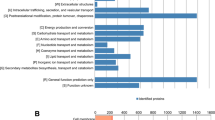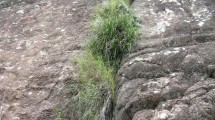“They both listened silently to the water, which to them was not just water, but the voice of life, the voice of Being, the voice of perpetual Becoming.” Herman Hess, “Siddhartha”.
Abstract
Anhydrobiosis is a well-known phenomenon represented in a range of plant, animal and microbial taxa. It is a unique faculty of some organisms to survive in the absence of even traceable water in their cells. As water is essential for life and unequivocally important for all the biological reactions and molecular integrity of cellular components, surviving without water is nature’s toughest puzzle. Initial research in this direction to understand the overall mechanism and dynamics of cellular water was done several decades ago with primary focus on characterizing cellular water at different intensities of dehydration using biophysical tools that lead to the establishment (/development) of a correlation of water-binding ability of cell constituents with the extent of anhydrobiosis. Unfortunately, in due course, the research focus had gradually changed and lost this initial direction. We believe a precise characterization of cellular water during dehydrated conditions is still pertinent in the current era of multidisciplinary research. Here cellular water characterized employing biophysical tools can be very precisely correlated with ongoing metabolic activities and other molecular regulatory events that in turn help in characterizing anhydrobiosis. This review intends to revive earlier approaches that were used to characterize the state of cellular water. This could help modern research in anhydrobiosis to correlate ongoing molecular events and/or adaptations during any change in the hydration level very precisely with the particular state of cell water.


Similar content being viewed by others
References
Alpert P (2000) The discovery, scope, and puzzle of desiccation tolerance in plants. Plant Ecol 151:5–17
Battaglia M, Olvera-Carrillo Y, Garciarrubio A, Campos F, Covarrubias AA (2008) The enigmatic LEA proteins and other hydrophilins. Plant Physiol 148:6–24
Berjak P (2006) Unifying perspectives of some mechanisms basic to desiccation tolerance across life forms. Seed Sci Res 16:1–15
Bewely J (1979) Physiological aspects of desiccation tolerance. Ann Rev Plant Physiol 30:195–238
Bruni F, Leopold AC (1991) Glass transitions in soybean seed: relevance to anhydrous biology. Plant Physiol 96:660–663
Buitink J, Leprince O (2008) Intracellular glasses and seed survival in the dry state. C R Biol 331:788–795
Burke M (1986) The glassy state and survival of anhydrous biological systems. In: Membranes Metabolism, Organisms Dry (eds) Leopold A. Cornell University Press, New York
Chatterjee N, Nagarajan S (2006) Evaluation of water binding, seed coat permeability and germination characteristics of wheat seeds equilibrated at different relative humidities. Indian J Biochem Biophys 43:233–238
Clegg J (1978a) Hydration dependent metabolism and state of cellular water in Artemia. In: Crowe JH, Clegg JS (eds) Dry biological syatems. Academic Press, New York
Clegg J (1978b) Interrelationships between water and cellular metabolism in Artemia cysts. VII. Sorption isotherms and derived thermodynamic quantities. J Cell Physiol 94:123–138
Crowe JH, Hoekstra FA, Crowe LM (1992) Anhydrobiosis. Ann Rev Physiol 54:579–599
Cruz de Carvalho R, Catala M, Marques da Silva J, Branquinho C, Barreno E (2012) The impact of dehydration rate on the production and cellular location of reactive oxygen species in an aquatic moss. Ann Bot 110:1007–1016
D’Arcy R, Watt I (1970) Analysis of sorption isotherms of nonhomogeneous sorbents. Trans Faraday Soc 66:1236–1240
Du YL, Wang ZY, Fan JW, Turner NC, Wang T, Li FM (2012) Beta-aminobutyric acid increases abscisic acid accumulation and desiccation tolerance and decreases water use but fails to improve grain yield in two spring wheat cultivars under soil drying. J Exp Bot 63:4849–4860
Fernandez-Marin B, Kranner I, San Sebastian M, Artetxe U, Laza JM, Vilas JL, Pritchard HW, Nadajaran J, Miguez F, Becerril JM, Garcia-Plazaola JI (2013) Evidence for the absence of enzymatic reactions in the glassy state. A case study of xanthophyll cycle pigments in the desiccation-tolerant moss Syntrichia ruralis. J Exp Bot 64:3033–3043
Franca MB, Panek AD, Eleutherio EC (2007) Oxidative stress and its effects during dehydration. Comp Biochem Physiol Part A 146:621–631
Furini A, Koncz C, Salamini F, Bartels D (1997) High level transcription of a member of a repeated gene family confers dehydration tolerance to callus tissue of Craterostigma plantagineum. EMBO J 16:3599–3608
Furmaniak S, Terzyk A, Gauden P, Rychlicki G (2007) Applicability of the generalised D’Arcy and Watt model to description of water sorption on pineapple and other foodstuffs. J Food Eng 79:718–723
Hincha DK, Hagemann M (2004) Stabilization of model membranes during drying by compatible solutes involved in the stress tolerance of plants and microorganisms. Biochem J 383:277–283
Luscher-Mattlei M, Ruegg M (1982) Thermodynamic functions of biopolymer hydration I. Their determination by vapour pressure studies discussed in an analysis of primary hydration process. Bioploymers 21:403–418
Moore JP, Le NT, Brandt WF, Driouich A, Farrant JM (2009) Towards a systems-based understanding of plant desiccation tolerance. Trends Plant Sci 14:110–117
Multon J (1989) Interaction between water and constituents of grains, seeds and by products. CBS, New York
Oliver M, Bewley J (1997) Desiccation-tolerance of plant tissues: a mechanistic overview. Hort Rev 18:171–213
Oliver MJ, Tuba Z, Mishler BD (2000) The evolution of vegetative desiccation tolerance in land plants. Plant Ecol 151:85–100
Osborne JD, Boubriak II (1994) DNA and desiccation tolerance. Seed Sci Res 4:175–185
Parsegian A, Rau D, Zimmerberg J (1986) Structural relation induced by osmotic stress. In: Leopold AC (ed) Membrane metabolism and dry organisms. Cornell university Press, Ithaca
Ruegg M, Hani H (1975) Infra-red spectroscopy of water vapour sorption process of caseins. Biochem Biophys Acta 400:17–23
Sakurai M, Furuki T, Akao K, Tanaka D, Nakahara Y, Kikawada T, Watanabe M, Okuda T (2008) Vitrification is essential for anhydrobiosis in an African chironomid, Polypedilum vanderplanki. Proc Natl Acad Sci USA 105:5093–5098
Suggett A (1975) Water carbohydrate interactions. Academic Press, London
Sun WQ (2000) Dielectric relaxation of water and water-plasticized biomolecules in relation to cellular water organization, cytoplasmic viscosity, and desiccation tolerance in recalcitrant seed tissues. Plant Physiol 124:1203–1216
Tiwari BS, Tripathi SN (1998a) Water binding in sub-aerial cyanobacteria. Indian J Biochem Biophys 35:52–61
Tiwari BS, Tripathi SN (1998b) Effect of hydration and dehydration on initiation and dynamics of some physiological reactions in desiccation tolerant cyanobacterium Scytonema geitleri. Indian J Biochem Biophys 35:172–178
Tunnacliffe A, Lapinski J (2003) Resurrecting Van Leeuwenhoek’s rotifers: a reappraisal of the role of disaccharides in anhydrobiosis. Philos Trans R Soc Lond B 358:1755–1771
Vandermeulen D, Ressler N (1980) A near infra red analysis of water macromolecules interactions: hydration and spectra of aquous solutions of intact proteins. Arch Biochem Biophys 199:197–205
Varo G, Eisenstein I (1987) Infra-red studies of water induced conformational changes in bacteriorhodopsin. Eur Biophys J 14:163–168
Vertucci CW, Leopold AC (1987a) Water binding in legume seeds. Plant Physiol 85:224–231
Vertucci CW, Leopold AC (1987b) The relationship between water binding and desiccation tolerance in tissues. Plant Physiol 85:232–238
Vyumvuhore R, Tfayli A, Biniek K, Duplan H, Delalleau A, Manfait M, Dauskardt R, Baillet-Guffroy A (2014) The relationship between water loss, mechanical stress, and molecular structure of human stratum corneum ex vivo. J Biophotonics. doi:10.1002/jbio.201300169
Wang XQ, Yang PF, Liu Z, Liu WZ, Hu Y, Chen H, Kuang TY, Pei ZM, Shen SH, He YK (2009) Exploring the mechanism of Physcomitrella patens desiccation tolerance through a proteomic strategy. Plant Physiol 149:1739–1750
Acknowledgments
This work has been supported by a grant from the Department of Biotechnology, India, as a part of a Ramalingaswami fellowship to BST.
Author information
Authors and Affiliations
Corresponding author
Rights and permissions
About this article
Cite this article
Ambastha, V., Tiwari, B.S. Cellular Water and Anhydrobiosis in Plants. J Plant Growth Regul 34, 665–671 (2015). https://doi.org/10.1007/s00344-015-9497-6
Received:
Accepted:
Published:
Issue Date:
DOI: https://doi.org/10.1007/s00344-015-9497-6




